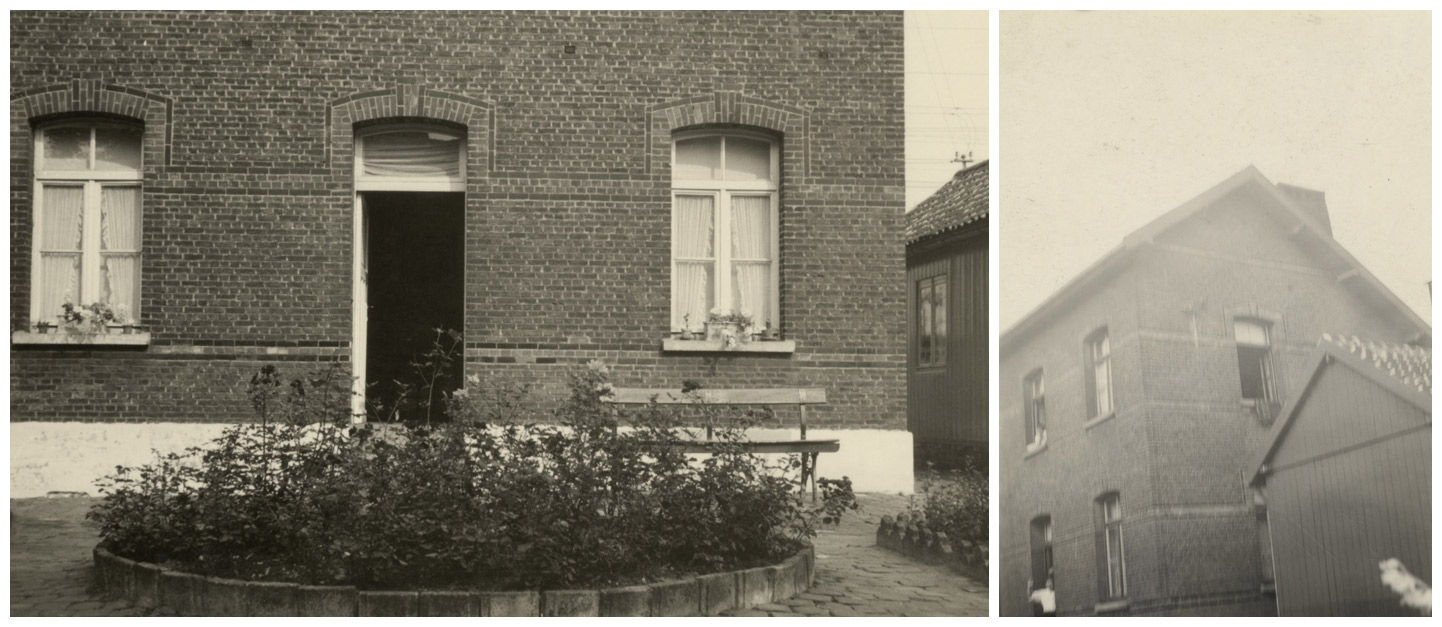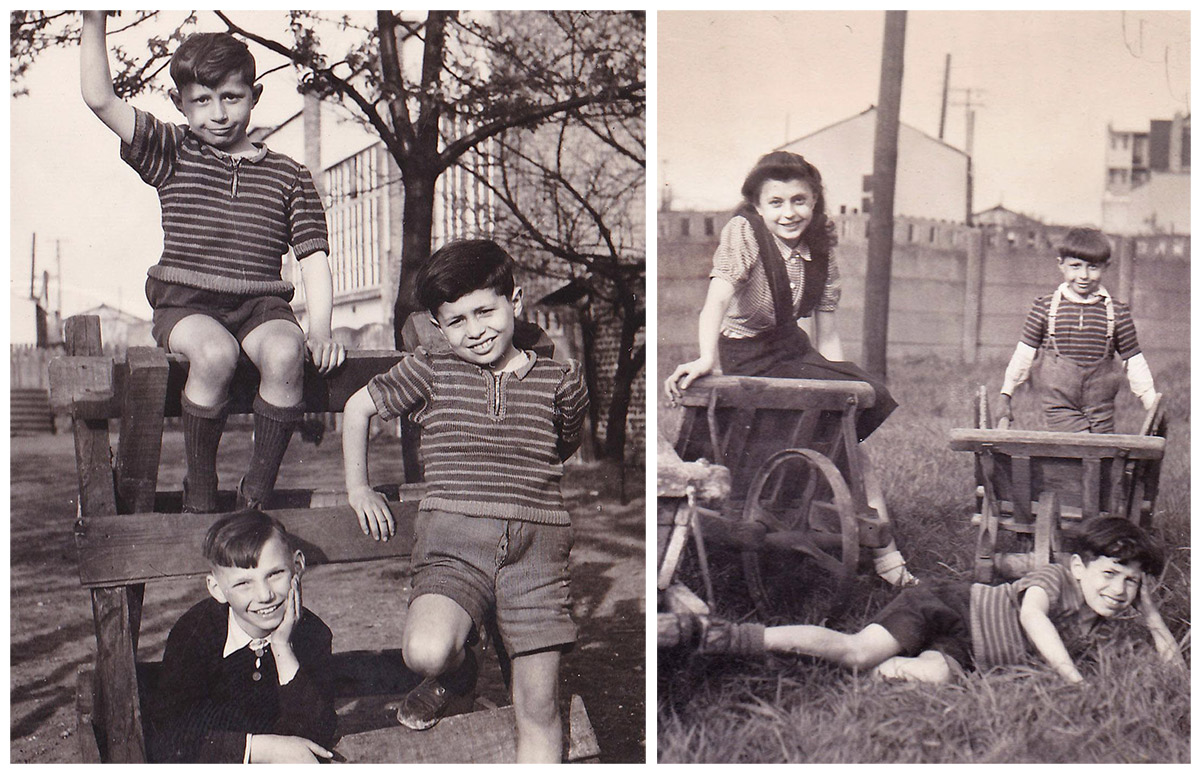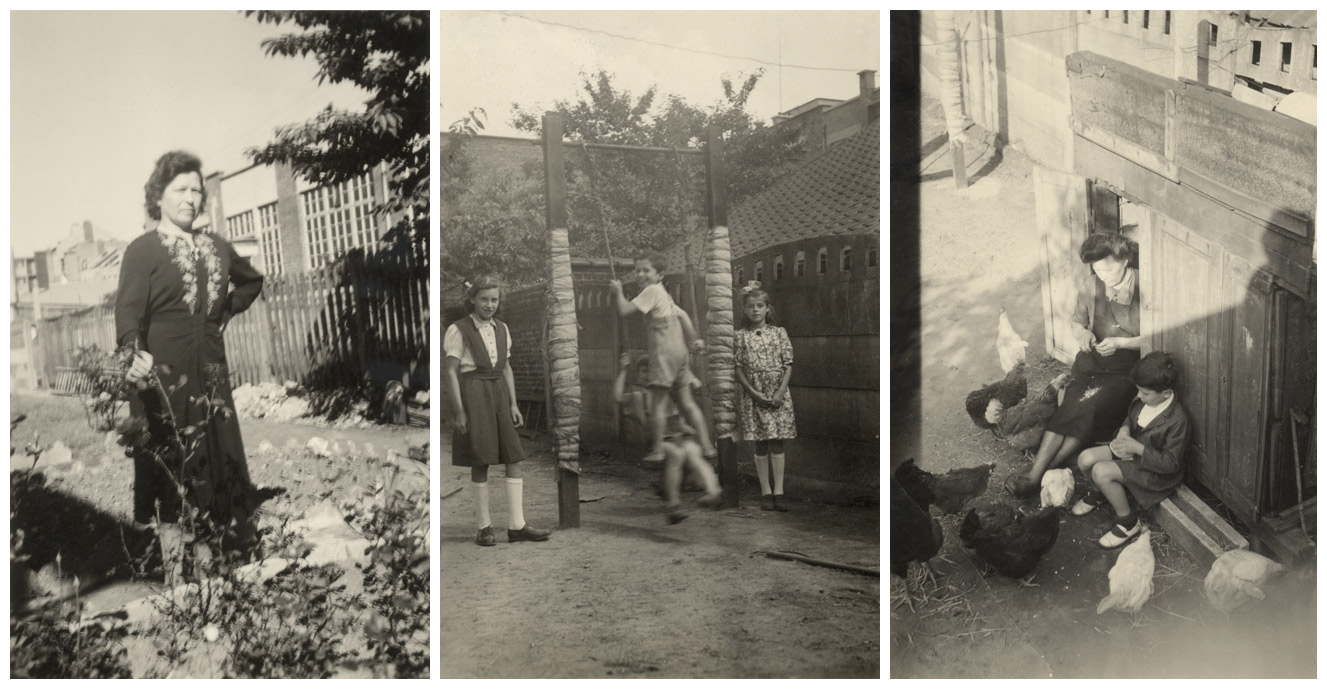Can you imagine your house standing in a museum? It's quite touching you know, seeing your youth immortalized like that. There's nothing quite as nostalgic as the house you grew up in. The museum has been built all around it. Unbelievable! We had a lovely time here with our father, Pieter-Paul Telemans, who was track foreman.
The railway: a story about people
We originally came from Limburg. That's where our adventures began. My father started working for the National Railways as track digger in Genk and made his way up the hierarchical ladder. He became team leader in Hasselt and when he was promoted to track foreman in 1939 we had to move to Evere. 3 years later he became track foreman in Schaerbeek and we went to live in the railway cottage that still stands here today. In 1958 my father retired, and sadly we had to leave the cottage. After that we lived in Zellik and Uccle. When my brothers, sisters and Ileft home and got married my parents decided to return to Limburg.
I think it's lovely that NMBS/SNCB has made this cottage such a feature in the museum. It's a homage to the men and women working at the railways. Making a train run takes a lot of people you know.
What does a track foreman do?
A track foreman was allocated a particular section of railway track. It was his responsibility to ensure that trains could run smoothly within his section, that the tracks were well maintained and that repair work was carried out. My father had a few teams of track diggers reporting to him. It was rather an important job as you can see!
Our wartime years
We lived in Evere when the war broke out and the National Railways called upon all its personnel to flee to Great Britain. The railway couldn't function without personnel, and this certainly slowed the Germans down for a while. I was just two years old at the time, too young to understand what was going on. My father told me all about it when I was older.

We went to Ostend, but it was so busy there that we couldn't find space on a ferry. After failing to get a train back home there was no choice but to join the throngs of refugees going to Veurne. Of course we didn't know that there would be such heavy war activity going on there. Luckily, after a few days, we were able to return home.
Two years later my father was promoted to track foreman in Schaerbeek. This is an important section with the largest marshalling yard in the country, depots, and dozens of kilometres of track. So, in the middle of the war, we moved to the railway cottage which now stands in Train World.
The importance of the station at Schaerbeek made it into a target for the Allied Forces, who wanted to bring the railways to a halt to stop the Germans. However, my father loved his job and saw it as his responsibility to just keep doing it as best he could. Not an easy task in such turbulent times!

Near our house was a section of dead end track used for reserve carriages and carriages needing repair. During the war it was also used for deportation carriages and carriages of the Red Cross. I'll never forget the Red Cross carriage standing there with blacked out windows. These gave it an abandoned look. Being young boys we were curious, so we poked a large stick through one of the open windows, trying to check it out. All of a sudden an angry nurse began shouting in an unknown language. We were off like a shot!
My father's boss, engineer Anslot, lived just over half a kilometre from Schaerbeek station. Stations were often bombed. That's why Anslot went to live at a safer distance. That's also why we went to live in his house during the last weeks of the war. However, Anslot was quite right, it was still not far enough. One day, as we were all sitting around the table enjoying a meal, a bomb blasted through the toilet wall. The door flew off and hit my brother Hugo on the head. We ran in a panic to the bomb shelter. It could have been much worse.
Escaping the war violence
The NMBS/SNCB were very concerned about their personnel. Towards the end of the war everyone was given the opportunity to send their children away from the fighting. My sisters were sent to the Kempen area and my brothers and I went to the ‘Colonie des Vacances’ in Flobecq. Normally this was a care home for retired railway workers, but there was still room for a group of children. After about four months, when the war was over, my father came to collect us all. In fact that time in Flobecq wasn't too bad. We learnt to speak French fluently while we were there. My brother Hugo was a favourite of one of the nurses there. She told him stories of her fiancé, a pilot who was deported to Germany. He was always given some tasty treats in return for his listening ear.
A carefree childhood in the railway cottage
We were nearly living in the tracks, so to speak. Our house was less than 2 metres from the tracks and the busy line to Antwerp was just 15 metres away. My two older sisters, Alice and Mariette, slept on the top floor on the north side. I slept on the same floor, but on the south side, together with my older brother Hugo and my younger brother Paul. Our parents slept in the middle. This way my mother could quickly intervene if we were fighting.
It was actually very comfortable there. We were well looked after by NMBS/SNCB! They always helped out if there were any problems. If, for example, there was water damage or a problem with the electricity they would send a plumber or electrician to sort it out.

There was also a wooden desk for my father and we had a big garden with some fruit trees and vegetables patches. We had even little barns for chickens, rabbits and ducks! This was particularly useful during the harsh wartime period. I still remember that my father built us a swing with some old railway sleepers.
As children we had great fun playing on the swing and in the barns. The rabbit barn, which was also used for storing hay, was ideal for playing hide and seek. When we got older my brothers and I turned one of the barns into a clubhouse. This is where we did our homework and prepared meetings for the scouts at Evere. All three of us were leaders there. In short, I had a really great time in Schaerbeek with my friends and family!